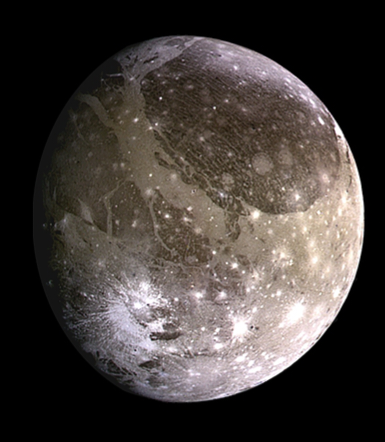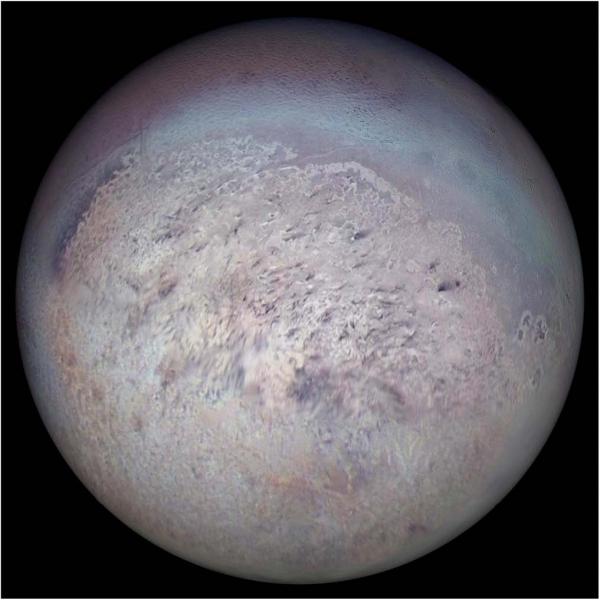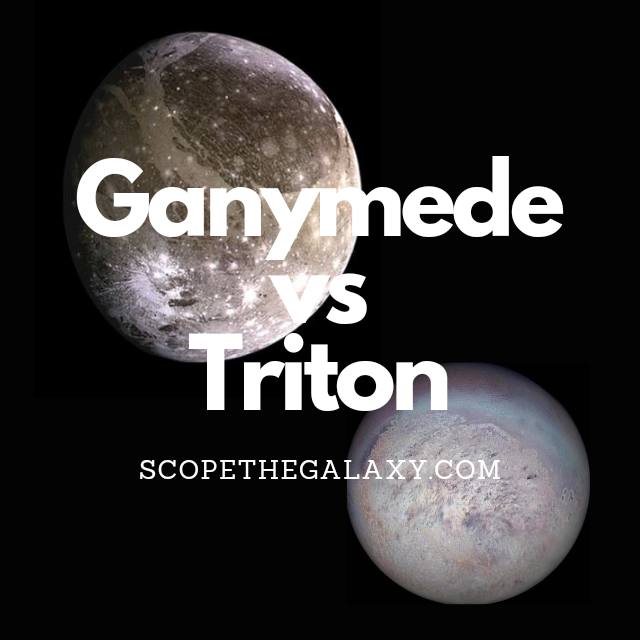*This post may contain affiliate links. This means we may make a commission if you purchase an item using one of our links*
The main differences between Ganymede and Triton is that Ganymede is the largest moon in our solar system whilst Triton is 7th, Triton orbits Neptune whilst Ganymede orbits Jupiter and Ganymede has a magnetic field whilst Triton does not.
There are various other differences between the two so, continue reading for a more detailed look at both bodies along with a thorough look at the similarities and differences between them below.
What Is The Moon Ganymede?
Table of Contents

Ganymede is the largest moon in our solar system, bigger than Pluto and Mercury. As one of Jupiter’s Galilean moons, first discovered in January 1610, this lunar entity is among the most fascinating objects in the Milky Way.
The surface of Jupiter is half rock and half water ice, and satellite images show a unique terrain. Lengthy grooves make the moon unique, while differing densities of light and dark terrain suggest that the moon passed through many periods of crust formation.
Ganymede orbits Jupiter from a distance of around 1,070,000km, with an orbit that takes seven days to complete. Sitting 778,000,000km from the Sun, the temperatures on this frozen planet vary from -112 to -193 degrees Celsius. The diameter of Ganymede is 5,268km, but with only half the mass of Mercury, it is still classified as a low-density object.
In 2015, NASA’s Hubble Space Telescope made one of its most significant discoveries, providing evidence for a massive subterranean ocean that could contain more water than the total found on Earth’s surface. The discovery of water on a planetary body is significant because it’s the first sign of extraterrestrial life and indicates that a planet is habitable.
The Hubble telescope also showed the presence of ozone on Ganymede, suggesting that the moon could have oxygen in its atmosphere.
Scientists in the 1970s first proposed the idea of an underground ocean. Thanks to recent observations, they now estimate this body of water could be ten times deeper than the ocean’s we find on Earth, stretching almost 100km deep. And it may be bruised under as much as 150km of crust, primarily composed of ice.
Another fascinating feature of Ganymede is that it’s the only moon to possess a magnetic field. This field causes aurorae, ribbons of light composed of electrified gas, that circle the moon’s north and south poles. And because of the moon’s proximity to Jupiter, it is also affected by its planet’s magnetic field, which can change and manipulate the aurorae.
What Is The Moon Triton?

Triton is the largest moon of Neptune, whose most unusual feature is its retrograde orbit. Triton is the only major moon in our solar system which orbits in the opposite direction of its planet’s rotation.
First discovered on 10th October 1846 (just 17 days after the discovery of its planet, Neptune) by British astronomer William Lassell, “Triton” comes from a merman in Greek myth; a name which perhaps stems from the composition of this faraway moon.
The diameter of Triton is approximately 2,706km, making it a similar size to Earth’s moon. However, we know that its mass is far less than the first estimates suggested because data from Voyager showed that the surface is icy and highly reflective, a less dense composition than the dark surface of our moon.
This icy surface has resulted in ice based natural satellite displaying temperatures in the region of – 235 degrees Celsius.
This lower density stems predominantly from the water-ice interior encasing a denser rock core. Still, the mean density of 2.06 grams per cubic cm remains higher than that of any of Saturn’s or Uranus’ moons. In addition, Triton holds more than 99.5% of the mass of everything that orbits the planet Neptune and its total mass is greater than every smaller satellite in the solar system combined.
Scientists think that Triton may be an object from the Kuiper Belt that Neptune’s gravity captured millions of years ago. This is because it shares many similarities with the dwarf planet Pluto – the best-known world within the Kuiper Belt.
This frozen world is a land of geological oddities with craters and a collection of depressions and ridges known as cantaloupe terrain. The geysers found on this moon shoot plumes of nitrogen as high as 8km high, which creates a thin atmosphere of nitrogen.
In around 3.5 billion years, Triton’s orbit will travel too close to Neptune, and the planet’s gravitational pull will break the moon apart, creating a ring system.
Similarities Between Ganymede And Triton
As both are natural satellites, it only makes sense that Ganymede and Triton have their fair share of similarities, which in this case includes the below.
- Both have a hotter central core.
- Both have a rocky, terrestrial surface.
- Both are spherical in shape.
- Neither have rings surrounding them.
- Both are tidally locked to their planet.
- Both orbit their planet in an elliptical pattern.
- Neither have tectonic plates.
- Both have a practically non existent axial tilt.
Differences Between Ganymede And Triton
In regards to the differences between the two, they include the below:
- Ganymede is the bigger of the two with a diameter of 5,268km whilst Triton has a diameter of 2,706km.
- Triton orbits Neptune whilst Ganymede orbits Jupiter.
- Triton has a very thin exosphere composed mostly of nitrogen with small amounts of methane whilst Ganymede’s atmosphere is a very thin oxygen based one.
- Ganymede has a magnetic field whilst Triton does not.
- A day on Triton takes 5.877 days whilst a Ganymede day is 7 days and 3 hours.
- It takes Triton 5.877 days to orbit Neptune whilst Ganymede orbits Saturn in 7 days and 3 hours.
- Ganymede orbits Jupiter at an average distance of 1.07 million km whilst Triton is 354,800 km from Neptune.
- Triton’s average temperature is around -235 degrees Celsius whilst Ganymede’s average temperature is -112 to -193 degrees Celsius.
- Ganymede’s density is 1.94 g/cm³ whilst Triton’s density is 2.06 g/cm³.
- Ganymede mass is 1.48 × 10^23 kg whilst Triton’s mass is 2.14 × 10^22 kg.
- Triton’s gravitational strength is 0.779 m/s² whilst Ganymede’s is 1.428 m/s².
- Triton is the only moon in our solar system that orbits its planet in a retrograde orbit.
Summary
Both are moons so it makes sense that they would share a number similarities between themselves such as their terrestrial nature, the fact both are tidally locked to their respective planets, which also happen to gas based giants. However, they also have their fair share of differences.
Whether it be in regards to size, mass, magnetic field activity, the composition of their atmospheres and more. In the end of the day they do have a lot in common but are still distinct in their own right.

